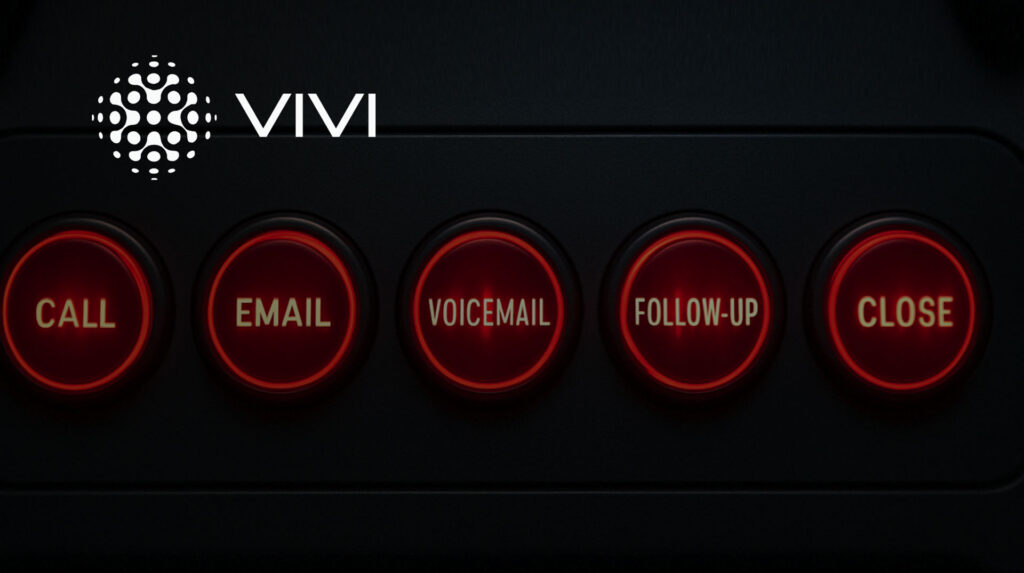AI Agents: The Employees Who Never Call in Sick
If your job includes sorting through a thousand emails, wrestling with scheduling software, or doing any task that makes you question your life choices, AI agents might be your new best friends—or your competition.
They don’t take lunch breaks, don’t get distracted by office gossip, and never disappear when there’s work to be done. Some follow strict rules, others learn as they go. Either way, they’re reshaping the workplace—whether we like it or not.
How AI Agents Work (In Plain English)
AI agents do three things: take in information, process it, and act on it. Some stick to rigid scripts, others adjust over time. It’s the difference between a motion sensor light (on-off, no thinking) and an AI chatbot that realizes when you’re frustrated and changes its tone (hopefully before you throw your laptop out the window).
For businesses, this means fewer errors, faster workflows, and a lot of saved time. For employees? Well, that depends. Are these AI tools making your job easier, or are they gunning for your paycheck?
Why Businesses Are Throwing Money at AI Agents
Less boring, repetitive work – AI handles the mind-numbing tasks like invoice processing, basic customer inquiries, and data entry. This not only frees up employees for more strategic work but reduces burnout.
24/7 reliability – Unlike humans, AI doesn’t need rest. It works round-the-clock, offering consistent performance even during nights, weekends, or holidays. This is especially valuable in global operations where work never stops.
Cost savings – Businesses can deploy AI agents at scale without incurring salaries, benefits, or overtime pay. For routine operations, one well-built AI can replace several full-time staff, leading to leaner but more efficient teams.
Smarter decision-making – With access to large datasets and pattern recognition capabilities, AI can inform decisions faster than a human analyst ever could. It’s not just automation—it’s insight that leads to competitive advantage.
The 5 Types of AI Agents You’ll Probably Run Into
1. Simple Reflex Agents: The One-Track Minds
These are the AI equivalent of that co-worker who only does exactly what they’re told and nothing more. No thinking, no learning, just action.
Examples:
A thermostat that kicks on the AC when the room gets too warm. It’s reactive, not predictive.
Motion-sensor lights that turn on when you walk in. They operate with a basic “if this, then that” script, which means no flexibility if context changes.
Spam filters that block emails from sketchy addresses. These rules-based systems are efficient—but easily tricked without updates. They need constant tweaking to stay effective.
2. Utility-Based Agents: The Decision Makers
These agents don’t just react; they weigh different options and pick the best one based on efficiency, cost, or convenience.
Examples:
E-commerce platforms recommending products to maximize click-throughs and sales. They’re always optimizing for engagement and revenue.
Ride-sharing apps adjusting fares based on demand. This “surge pricing” isn’t random—it’s algorithmic, aiming to balance supply and demand in real-time.
Smart inventory systems predicting the best time to restock products. These systems balance cost, demand, and lead time to avoid both shortages and overstock.
3. Goal-Based Agents: The Planners
Instead of reacting to the moment, these agents plan ahead and adjust their actions based on long-term objectives.
Examples:
Robot vacuums mapping out the most efficient cleaning path. It’s not just wandering—it’s calculating and refining its map each time.
AI-powered project management tools prioritizing deadlines. They forecast slippage and suggest resource allocation, acting like a digital PM.
GPS apps rerouting you based on live traffic updates. Constant recalculations help you hit your arrival time with fewer delays, even if the route looks odd.
4. Learning Agents: The Ones That Get Smarter (For Better or Worse)
These AI models adapt over time, learning from their past actions.
Examples:
Fraud detection systems evolving to catch new scam tactics. Every alert reinforces the model—or corrects it to prevent false positives.
AI chatbots fine-tuning their responses based on past conversations. Feedback helps them become more human-like, or at least less frustrating.
Netflix and Spotify tweaking recommendations based on your binge-watching habits. Every click is a data point, forming a profile more intimate than you might like to admit.
5. Model-Based Agents: The Predictors
Unlike simple reflex agents, these AI models build an internal understanding of their environment, helping them predict and plan ahead.
Examples:
AI-driven software testing simulating real user interactions. They don’t just test functionality—they simulate context to anticipate user behavior.
Automated code review tools catching security flaws before launch. They “understand” how the code behaves, not just whether it compiles.
AI-powered ERP systems optimizing workflows across entire companies. They act like a second brain for your operations, spotting inefficiencies before people even notice.
Sector-Specific Agent Applications
In Healthcare
Patient intake agents can collect symptoms and medical history through chat-based or voice-guided interfaces, speeding up check-ins and reducing paperwork for staff.
Insurance claim bots process large volumes of paperwork faster than any human team, reducing bottlenecks and errors that can delay treatment approvals.
Diagnostic agents assist radiologists by flagging anomalies in scans with higher accuracy over time, supporting earlier and more accurate diagnoses.
In Finance
AI advisors help retail investors model risk and returns, democratizing access to portfolio management tools once reserved for professionals.
Compliance agents monitor financial transactions in real time, alerting human auditors to suspicious behavior without needing to sleep or take breaks.
Credit-scoring systems dynamically adjust borrower profiles based on live behavior and external economic signals, potentially widening or narrowing access to capital.
In Manufacturing
Quality control bots use machine vision to identify defects before a product ships, minimizing waste and improving reputation.
Scheduling agents analyze thousands of combinations to balance machine loads, materials, and labor more efficiently.
Predictive maintenance agents forecast machine failure before it happens, reducing unplanned downtime and maintenance costs.
The Future of AI in the Workplace
More AI-human collaboration – As AI tools become more adaptive and explainable, employees will start seeing them less as competitors and more as co-workers—digital teammates that extend their own reach.
More transparency – Companies will demand tools that don’t just work, but explain how they work. This is critical in fields like healthcare, legal, and finance where explainability isn’t a luxury—it’s a compliance requirement.
More advanced AI teamwork – Multi-agent systems will allow AI tools to coordinate on projects in a way that mirrors human departments, each with a specialty and communication protocol. Think AI “departments,” not just AI “tools.”
AI Agent Onboarding Checklist
Rolling out AI agents? Don’t treat it like flipping a switch—treat it like hiring an employee. Here’s a checklist to make sure your rollout doesn’t become a slow-motion failure.
Step 1: Define the Role
What task is the agent designed to perform? Be specific—vague goals produce vague outcomes.
What’s the business goal behind the deployment? Is it speed, accuracy, cost savings, or all of the above?
What data will it use—and what data is off limits? Know your guardrails before you hit “deploy.”
Step 2: Train the Team (and the Agent)
Do your users know what the AI agent does—and doesn’t do? Manage expectations upfront.
Have you defined edge cases, escalation paths, and red flags? Clarity here prevents trust-eroding surprises later.
Is there a feedback loop in place so users can correct or reinforce behavior? This is how the agent actually improves.
Step 3: Establish Guardrails
What systems can the agent touch? Define access tightly.
Can it take autonomous action, or does it require signoff? Don’t assume the answer—decide it explicitly.
Have you documented fallback scenarios if it fails or produces errors? Plan for when things go wrong.
Step 4: Measure Performance
What are the KPIs for success? (Speed? Accuracy? Cost savings?) Don’t launch without metrics.
Is there a human reviewer or audit process? Trust but verify.
How often will the agent’s behavior be reviewed or updated? Treat this like performance management.
Step 5: Maintain Transparency and Trust
Can users understand why the agent did what it did? If not, adoption will suffer.
Is decision logic accessible if needed—for legal, compliance, or team confidence? You don’t want a black box when questions arise.
Are your customers aware when they’re interacting with AI vs. a human? Transparency isn’t just ethical—it’s strategic.
Smart onboarding is the difference between an AI agent that quietly saves time—and one that quietly creates chaos. Invest the same care you’d give to hiring a person. Because in many ways, you are.
The Reality Check: What Makes AI Agents Succeed (or Fail)
Even the smartest AI agent can still blow it. They don’t understand nuance. They don’t read the room. They can’t distinguish between sarcasm and sincerity, urgency and routine, a sensitive question and a throwaway comment.
This is why AI agents need oversight—not because they’re unreliable, but because they’re unfamiliar with human complexity. In customer service, that could mean an agent offering a refund when an apology would have done more. In HR, it could mean missing the emotional context of an employee’s concern.
It’s also easy to assume that once an AI tool is deployed, the work is done. But unused AI is worse than no AI—it eats resources, inflates expectations, and builds skepticism. Every AI rollout that flops erodes trust in the next one.
This is why implementation planning matters. Who owns it? Who supports it? Who teaches it to others? AI agents may not need onboarding themselves, but your people do. And if they don’t understand it—or worse, resent it—your fancy new digital assistant becomes a very expensive ghost.
So how do you know if it’s actually working? Here’s a simple test: if you took the AI away tomorrow, would anyone notice?
If the answer is no, you’ve got a vanity deployment. If the answer is yes—and the response is panic—then your AI agent is probably doing real work.
Good AI fades into the background. It just works. But that invisibility makes it hard to measure unless you track impact directly: time saved, errors reduced, tickets closed, sales supported. Don’t let invisibility be confused with irrelevance—or assume adoption means success.
When AI Agents Talk to Each Other
Most people think of AI agents as standalone tools—chatbots, assistants, back-office processors. But that’s not where things are headed. The real future of AI is coordination: multiple agents interacting with each other, solving bigger problems through delegation, negotiation, and feedback.
Imagine a customer support agent escalating a billing issue. It doesn’t hand it to a human—it hands it to an AI billing agent that understands payment systems, discounts, and policy exceptions. That billing agent might then query a policy rules agent to double-check compliance. Three AI agents, one interaction, no human interruption.
This kind of orchestration opens doors. It allows organizations to modularize work, breaking complex tasks into specialized units that don’t overload a single model. It’s like having departments of AI—not one generalist bot, but a coordinated team.
It also introduces challenges. Who governs these agents? What happens when they disagree? How do you ensure they’re all operating from the same source of truth? Multi-agent systems require oversight, standards, and clear protocols—or else they spiral into chaos faster than a Slack channel without a naming convention.
But done right, they scale better than monolithic AI. They reduce system fragility. And they mirror the way actual businesses work: through collaboration.
The smartest AI agents won’t just work. They’ll work together.
Shape
Final Thoughts
AI agents are no longer futuristic novelties—they’re practical tools reshaping how businesses operate. But they’re not plug-and-play magic. They require strategy, context, and real follow-through.
The companies getting ahead aren’t the ones buying the most AI—they’re the ones integrating it with care, auditing it with discipline, and adapting it to human workflows instead of the other way around.
The opportunity is real. So is the work.
Treat AI agents like employees: hire well, train intentionally, monitor closely, and don’t be afraid to fire the ones that aren’t pulling their weight. Here’s a simple test: if you took the AI away tomorrow, would anyone notice?
If the answer is no, you’ve got a vanity deployment. If the answer is yes—and the response is panic—then your AI agent is probably doing real work.
Good AI fades into the background. It just works. But that invisibility makes it hard to measure unless you track impact directly: time saved, errors reduced, tickets closed, sales supported. Don’t let invisibility be confused with irrelevance—or assume adoption means success.













